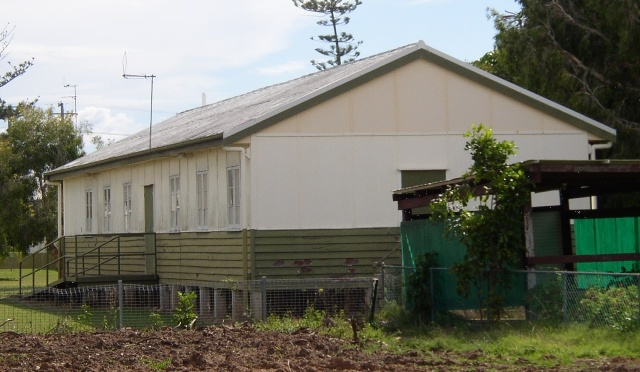Addresses
Type of place
Work residence, Defence site
Period
World War II 1939-1945
Addresses
Type of place
Work residence, Defence site
Period
World War II 1939-1945
These two former barracks, built in a similar style to the ‘Sidney Williams’ huts, are all that remains of the Sandgate RAAF Training Base which was built just prior to the Pacific War in 1941. Constructed to house RAAF and WAAF trainees, the barracks were prefabricated and designed for ease of construction, and were only meant to be temporary structures. Postwar, the base was used as a demobilisation unit before becoming part of the Eventide Nursing Home.
Also known as
Sandgate RAAF Training Base
Lot plan
L23_SP233993
Key dates
Local Heritage Place Since —
Date of Citation —
Construction
Roof: Corrugated iron;Walls: Timber
People/associations
Commonwealth Government (Architect)Criterion for listing
(A) Historical; (B) Rarity; (D) Representative; (F) Technical; (H) Historical associationInteractive mapping
Also known as
Sandgate RAAF Training Base
Lot plan
L23_SP233993
Key dates
Local Heritage Place Since —
Date of Citation —
Construction
Roof: Corrugated iron;Walls: Timber
People/associations
Commonwealth Government (Architect)Criterion for listing
(A) Historical; (B) Rarity; (D) Representative; (F) Technical; (H) Historical associationInteractive mapping
History
Information from the RAAF Historical Section in Canberra shows that RAAF Station Headquarters, consisting of No 3 Initial Training School and No 3 Embarkation Depot were formed on 16 December 1940 (Signals A1 18/12 & A3 20/12). Sandgate base was used purely as a training base until it became a demobilisation unit post war.
The advance party was instructed to proceed to Sandgate, arriving 9 December 1940. On arrival it was discovered no buildings had been constructed due to an intense wet season. This group was temporarily based at Amberley Part were sent to the base site with the orderly room, transport section and stores being in operation by July 1941. An opening ball was held at Sandgate Town Hall to mark the event.
Out of the initial trainees, twenty were air crew. Of this number only 3 returned alive.
In fact the official date given for the full occupation of the base is given as 18 April 1941. By April 1942 the breakdown of staff consisted as follows
Station Headquarters
RAAF 17 Officers, WAAF 4 Officers
RAAF Airman 162 + 1 male nurse
WAAF Airmen 22
No 3 Initial Training School
RAAF Officers 23
Nurses 1, Airmen 57, WAAF Airmen 4
No 3 Embarkation Depot
Officers 2, Airmen 5
It would appear that their service life began at Sandgate and then progressed to more advanced training bases such as such as Wagga Wagga.
A rifle range and an observation post was located on a nearby farm at Brighton
While the RAAF base at Sandgate was operative, another base was operating in the Petrie Strathpine area (there were three in this area). At this area fighter squadrons were active, with the 80th Fighter Squadron of the USAAF flying P39 Airacobras. Also based in this locality were Vultee Vengences of No 12 Sqn, Boomerang fighters of No 83 Sqn and Spitfires of 548 and 549.
The design the barrack most closely resemble are the “Sidney Williams” huts. However the Sandgate huts were produced prior to American involvement in the war. Therefore they are not strictly pre-fab in origin and being of British or Australian design, are considerably rarer. Although they are not placed in their original position circa 1941, they are still within the original perimeter of the base.
This company previously constructed ‘Comet’ brand windmills and was founded in Rockhampton in 1879. It is possible prefabricated sections of the building may have been constructed there or at their Dulwich Hill factory in Sydney.
Prefabricated WWII Structures in Queensland did not identify the structures at Eventide, however it displays an identical structure in its preliminary inventory of surviving WWII buildings on the Atherton tablelands. Part of the Atherton Camp Barracks, it has been moved off site to Beantree Rd, Tolga and is in a dilapidated state.
After 1946 the base became known as Eventide Aged Persons home after the transfer of elderly persons from Dunwich. The converted RAAF base has gradually had its structures demolished or removed with facilities significantly upgraded. These remaining two structures are all that remains of the former base.
Statement of significance
Relevant assessment criteria
This is a place of local heritage significance and meets one or more of the local heritage criteria under the Heritage planning scheme policy of the Brisbane City Plan 2014. It is significant because:
Citation prepared by — Brisbane City Council (page revised June 2022)

